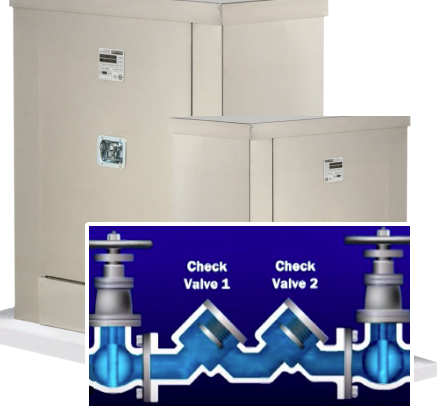PROTECT WHAT PROTECTS: THE IMPORTANCE OF SECURING YOUR RPZ
Any commercial or industrial facility can use any amount of water, but once used water passes through a meter and backflow preventer, it cannot go back into the water supply.
A reduced pressure zone (RPZ) valve assembly provides exceptional safeguards because it has a relief valve built into the assembly. When under threat of a backflow event, the relief opens up, dumping water that would have otherwise recirculated into the water supply.



